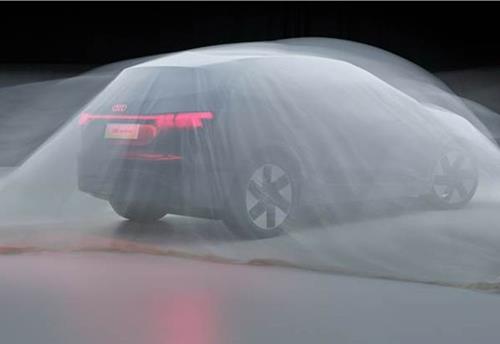Magna develops ultralight door module, achieves 42% mass savings
Design team reimagines door architecture from scratch, achieves 42.5-percent mass savings over current production door and applicable to 70 percent of light vehicle market.
Magna International Inc, in cooperation with the US Department of Energy (DOE) and partners FCA US and Grupo Antolin, has developed a new, ultralight door architecture that achieves the project objective of 42.5 percent mass savings compared to an average current production door.
Earlier this month, at the 2017 North American International Auto Show, Magna and its project partners presented a solution to further help global automakers meet emissions standards and reduce fuel consumption through lightweighting.
Magna's advanced engineering team – a collaborative effort between the company's corporate R&D and various product groups – combined its unique, full-vehicle perspective on the design of a driver's-side door with an inventive mix of materials and technology to tackle the challenge of significant weight reduction. This was developed in less than 10 months while keeping the cost within accepted industry parameters and providing a solution that applies to approximately 70 percent of the light vehicle market.
"The team started from scratch and reimagined the way we think about the design, development and material-use of a door architecture," said Swamy Kotagiri, chief technology officer, Magna International. "Building on our significant expertise in lightweighting from previous DOE projects, the team leveraged our broad product-development expertise and tackled this challenge in a cost-effective manner while meeting safety, durability and functionality requirements."
Magna built on its know-how from the development of the Multi-Material Lightweight Vehicle (MMLV) with the DOE and Ford in 2014, and took it a step further in creating a solution for this advanced ultralight door project.
A key innovation associated with the development of the ultralight door includes integration of Magna's SmartLatch electronic latch system. This eliminated the need for mechanical hardware and enabled the development of a unique carrier module with integrated glass guides and lift capability of a lightweight hybrid glass laminate, an industry first.
The door-in-white assembly makes extensive use of aluminium, which achieves approximately half of the total mass reduction of the door assembly. Overall, the project makes use of materials readily available today that can easily be made using existing manufacturing processes, without a significant increase in production costs or changes in body-shop infrastructure.
Grupo Antolin contributed its know-how in the design and manufacture of interior trim components to contribute to the significant mass reduction. The application of advanced molding technologies and polymers contributed approximately 7 percent to the total mass reduction.
The ultralight door development included intensive simulation efforts, passing all safety and durability testing in the process. The next steps include manufacturing full-scale prototype door assemblies, performance tests and safety tests to validate the design, with the goal of being available for use in production vehicles by the fall of 2020.
The FCA US engineering team has been an integral part of the design and development of the ultralight door, providing engineering collaboration to confirm compatibility with existing assembly operations as well as CAE durability, fatigue and safety analysis. FCA US plans to conduct testing of prototype door assemblies and full vehicles to validate the results of the predictive simulation.
This material is based upon work supported by the Department of Energy, Office of Energy Efficiency and Renewable Energy (EERE), under award number DE-0007306.
RELATED ARTICLES
Netradyne expands UK operations via partnership with Intelex
The collaboration between Netradyne and Intelex marks a substantial leap forward in advancing road safety and fleet mana...
Audi Q6L e-tron, Q5 e-tron RS, SQ6 coming to Beijing motor show 2024
Long-wheelbase Audi Q6 e-tron, SQ6 based on PPE platform.
Sona Comstar opens new plant in Mexico to cater to growing EV demand in N America
The new facility, set up to meet the growing demand for high-quality driveline solutions for BEVs in North America, will...





 By Autocar Pro News Desk
By Autocar Pro News Desk
 31 Jan 2017
31 Jan 2017
 3439 Views
3439 Views









